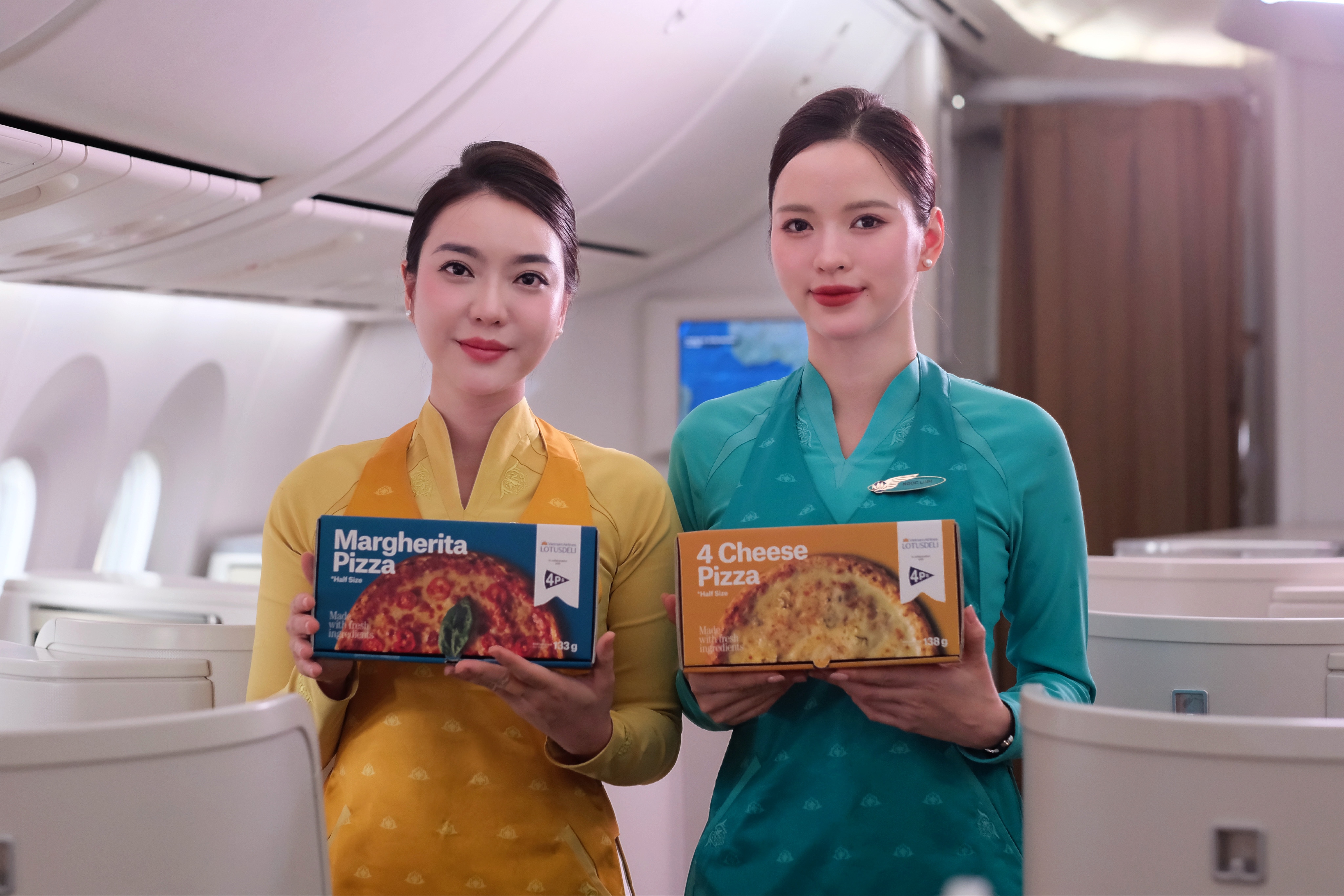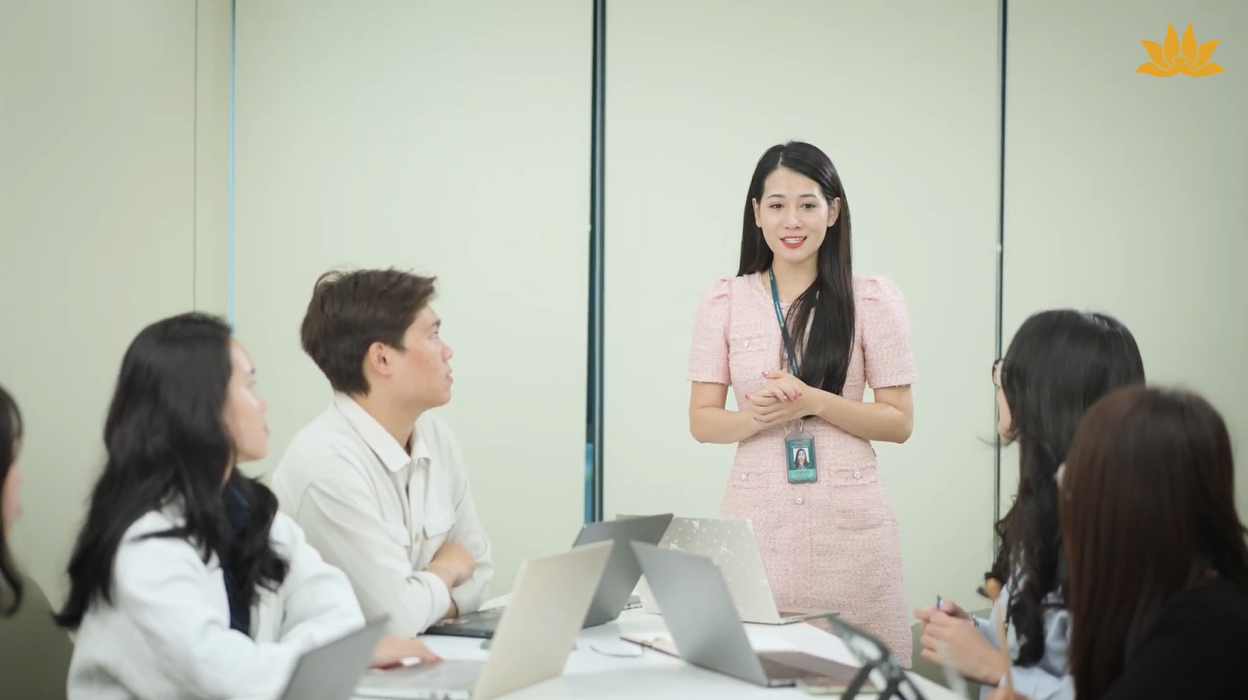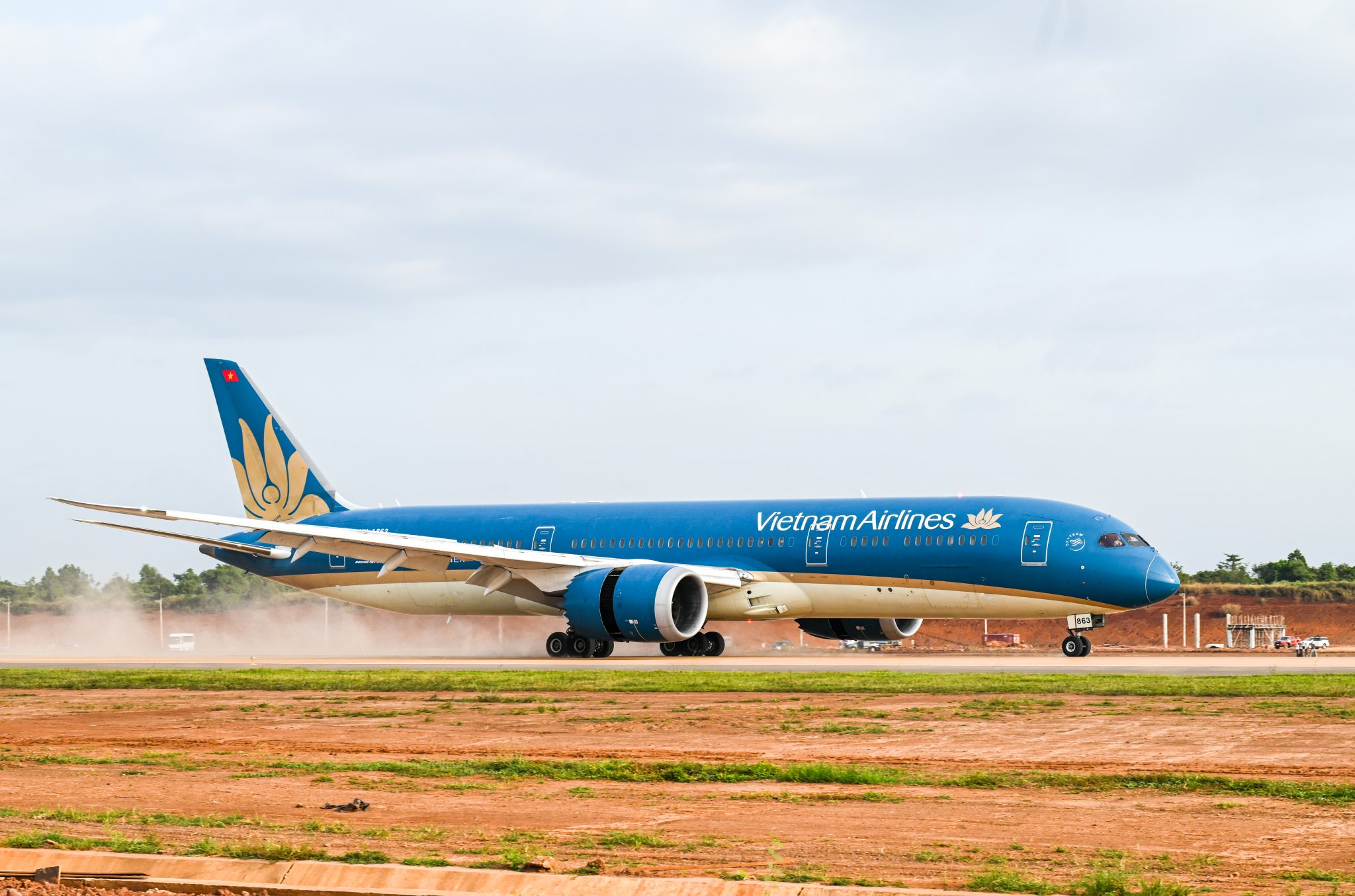While she and her colleagues had been expecting the news for some time, with airlines struggling amid the COVID-19 pandemic, it still came as a blow.
Last week, Singapore’s national carrier said that about 2,400 employees would be affected by job cuts, while another 1,900 positions are being eliminated by measures such as a recruitment freeze and early retirement schemes.
The SIA Group had more than 28,000 employees across three airlines and SIA Engineering as of Mar 31, according to its FY2019/2020 annual report. Of those, the bulk – more than 17,000 – were from Singapore Airlines.
Four days after the announcement, the layoffs began. Trainees and non-Singaporeans were among some of the first to be let go, interviewees told CNA.
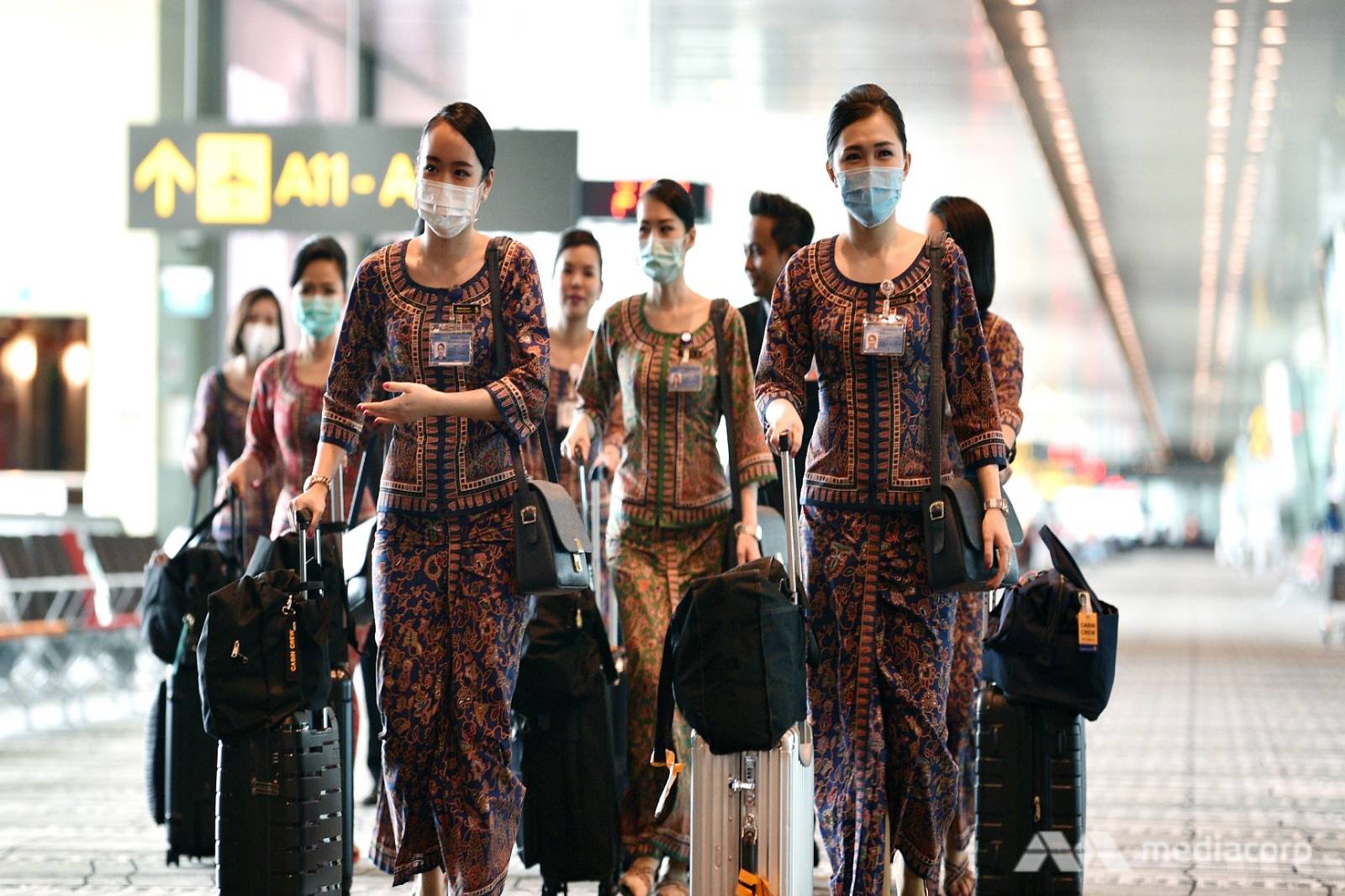 Singapore Airlines flight attendants wearing masks at Changi Airport Terminal 3’s arrivals hall. (Photo: Jeremy Long)
Singapore Airlines flight attendants wearing masks at Changi Airport Terminal 3’s arrivals hall. (Photo: Jeremy Long)
Last year, Lin was flying nearly constantly with seven to 10 flights a month. This year, she has been called up for one flight a month since April. This means a large pay cut as the basic salaries for cabin crew are only a portion of their pay. On top of that, there is a variable component and allowances tied to the number of hours they fly.
She knows of colleagues who have had to take part-time jobs to get by, but decided to tighten her belt for now while she waits out this unprecedented crisis in the airline’s 48 year history.
So far, Lin has not received the dreaded retrenchment email, but she said that everyone was anxious when the news broke. Colleagues gathered for “one last drink” as they waited to see who got the cut.
“It was really a very sad day for all of us, nobody wanted anybody to go.”
All three staff members CNA spoke to, two of whom are cabin crew and one from SIA headquarters, said that their salaries plunged by about 50 per cent after their work hours were reduced since April.
That was around the time that many countries were putting entry restrictions in place to protect against imported COVID-19 cases. The airline cut 96 per cent of its capacity. More than four months on, the airline industry continues to be in dire straits, with SIA more badly affected than most as it has no domestic routes. In August, it suffered a 98.3 per cent year-on-year drop in passenger carriage.
The airline employees welcomed the break at first, but as the COVID-19 outbreak drags on and airplanes remain grounded, the uncertainty has been unsettling, they said.
Said Jon*: “I’ve been just living on my basic pay because I don’t really have a lot of commitments … (thinking) it will last for a couple of months. Eventually we realised this is something that’s in for the long run.”
He is now thinking about taking up part-time work so that he can continue saving for the future. But both he and Lin said that the company has been “fair” to them so far, given the circumstances.
Alice, who has been with the airline for decades, said that she’s working reduced hours, but knows of people who took early retirement packages.
“I think this is the worst ever, much worse than SARS (Severe Acute Respiratory Syndrome),” she said.
In 2003, when the SARS outbreak hit Asia, SIA retrenched hundreds of staff.
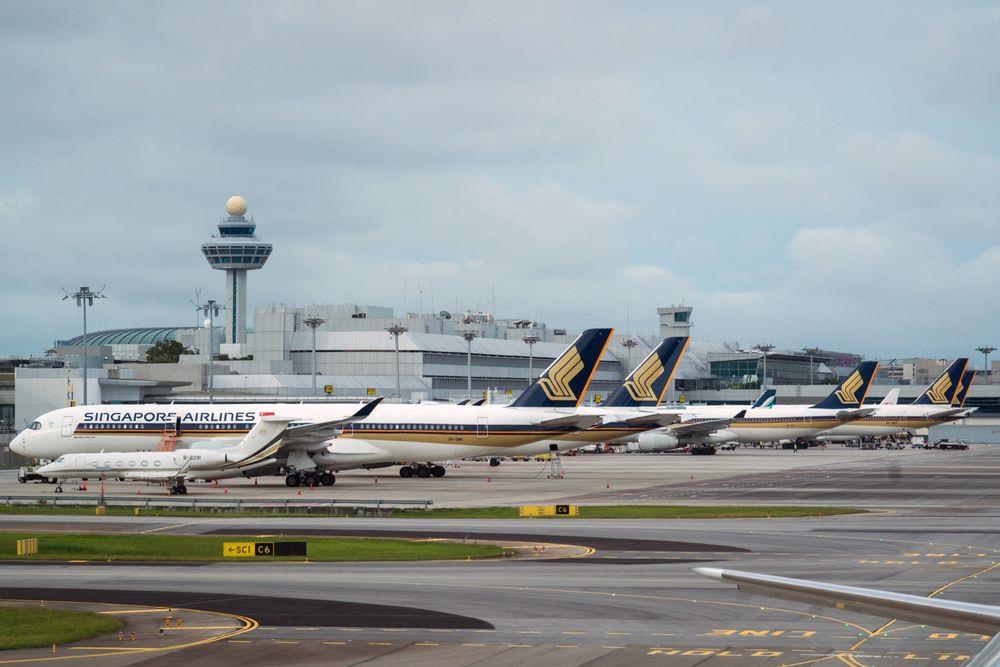 SIA has said it expects to operate under 50 per cent of its capacity at the end of financial year 2020/21. (Photo: SIA)
SIA has said it expects to operate under 50 per cent of its capacity at the end of financial year 2020/21. (Photo: SIA)
SIA Group said in a statement that the retrenchment exercise will be carried out in a “fair and respectful” manner.
Affected staff will receive salaries in place of their notice period, and those with the airline for more than two years will get an additional month’s pay for each year of service, capped at 25 months.
“During the exercise, SIA deployed resources from across the company to support the affected staff. The terms of the release package were explained individually to each affected staff,” a spokesman said.
SIA also arranged for counsellors, medical staff, and members of its unions to be present to provide support.
Companies such as Jumbo Group and Etonhouse have already started offering jobs to retrenched SIA employees.
For employees who have seen pay cuts, SIA said that it has also been helping them find temporary job opportunities outside the organisation: “We have waived our exclusive service for cabin crew who wish to take up such jobs. We have posted job opportunities on our Employee Support Portal, and placed more than 500 staff thus far.”
There are also ground-up initiatives such as Facebook group Cabin Crew United, which was started to support airline crew on furlough or who lost their jobs.
The group created by airline cabin crew and former crew members has about 1,600 members from SIA, SilkAir, and Scoot.
“Over the past few months, our focus has been on finding temporary or contract employment for our members who may be displaced. This has been a community effort and it has been heartening to see former cabin crew reaching out to their peers on this front,” said Mr Ruben Brandon, a former cabin crew and one of the founders of Cabin Crew United.
It has also been providing online content, and organised classes and charity drives for migrant workers to help engage its members.
SIA has said it expects to operate under 50 per cent of its capacity at the end of financial year 2020/21. Industry groups have also forecast that passenger traffic will not return to pre-COVID levels until around 2024.
Cre: Channel News Asia
Nguyen Xuan Nghia – COMM




